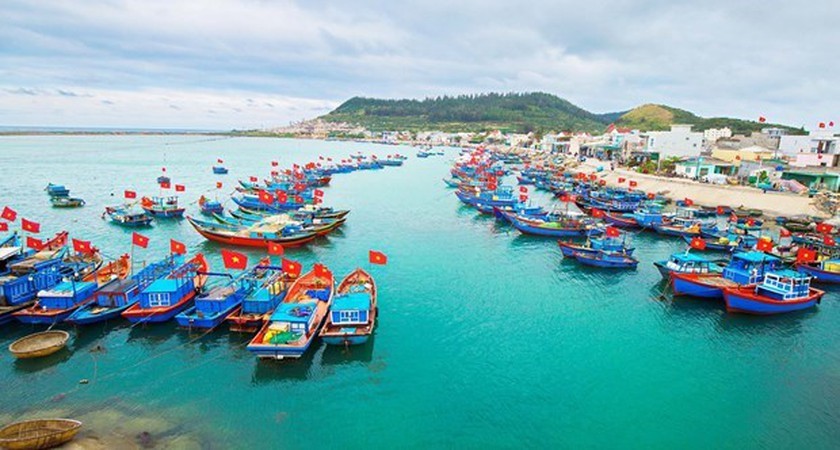 Illustrative image. (Photo: SGGP)
Illustrative image. (Photo: SGGP)
According to the Prime Minister’s Decision 196/QD-TTg that approves planning for ports and storm shelters for fishing vessels by 2020 with a vision to 2030, Vietnam should have 125 fishing ports, including 35 first-class and 90 second-class.
However, after six years of implementing this decision, there are only three first-class ports, 54 second-class facilities, and 11 in the third tier, with a combined capacity of handling about 8,000 vessel arrivals per day and 1.6 million tons of seafood per year.
The Directorate of Fisheries said the construction of ports and storm shelters has been relatively slow and has yet to meet industrialization and modernization requirements, while existing facilities also lack qualified personnel. It blamed this fact partly on limited finances.
Nguyen Quang Hung, Deputy General Director of the directorate, said most localities have not mobilized enough resources to upgrade ports or issued appropriate policies to attract private businesses to develop ports and related services.
Small ports don’t have enough space for shipyards to repair fishing vessels or seafood processing workshops, so this costs fishermen time and money as they search for a suitable port, he noted.
Deputy Minister of Agriculture and Rural Development Phung Duc Tien held that problems at existing ports and shelters need to be tackled quickly to build a modern and responsible fisheries sector. This will also greatly help with the removal of the European Commission’s “yellow-card” warning against illegal, unreported, and unregulated (IUU) fishing in the industry.
The port system should be industrialized and modernized through upgrading and expanding existing ports, with a focus on the facilities serving the fishery logistics services, to improve food safety, origin traceability, and seafood handling capacity.
Efforts should be invested in completing major fisheries centers and first-class fishery ports near key fishing grounds, according to Tien.
The Government is expected to earmark about VND10 trillion (US$435 million) to upgrade fishing ports in the coming time. About half of the funding will be sourced from the country’s medium-term capital and the rest from ODA loans in the 2021 - 2025 period.
The agriculture ministry is drafting a plan for the fishing port and storm shelter system for 2021 - 2030, with a vision to 2050. It is also amending policies to attract private investment into developing fisheries infrastructure and services.
However, after six years of implementing this decision, there are only three first-class ports, 54 second-class facilities, and 11 in the third tier, with a combined capacity of handling about 8,000 vessel arrivals per day and 1.6 million tons of seafood per year.
The Directorate of Fisheries said the construction of ports and storm shelters has been relatively slow and has yet to meet industrialization and modernization requirements, while existing facilities also lack qualified personnel. It blamed this fact partly on limited finances.
Nguyen Quang Hung, Deputy General Director of the directorate, said most localities have not mobilized enough resources to upgrade ports or issued appropriate policies to attract private businesses to develop ports and related services.
Small ports don’t have enough space for shipyards to repair fishing vessels or seafood processing workshops, so this costs fishermen time and money as they search for a suitable port, he noted.
Deputy Minister of Agriculture and Rural Development Phung Duc Tien held that problems at existing ports and shelters need to be tackled quickly to build a modern and responsible fisheries sector. This will also greatly help with the removal of the European Commission’s “yellow-card” warning against illegal, unreported, and unregulated (IUU) fishing in the industry.
The port system should be industrialized and modernized through upgrading and expanding existing ports, with a focus on the facilities serving the fishery logistics services, to improve food safety, origin traceability, and seafood handling capacity.
Efforts should be invested in completing major fisheries centers and first-class fishery ports near key fishing grounds, according to Tien.
The Government is expected to earmark about VND10 trillion (US$435 million) to upgrade fishing ports in the coming time. About half of the funding will be sourced from the country’s medium-term capital and the rest from ODA loans in the 2021 - 2025 period.
The agriculture ministry is drafting a plan for the fishing port and storm shelter system for 2021 - 2030, with a vision to 2050. It is also amending policies to attract private investment into developing fisheries infrastructure and services.
























